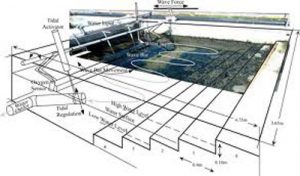Norwegian Institute for Water Research
NIVA Oslo
Gaustadalléen 21
NO-0349 Oslo
1. Hartvig Christie
2. Nikolai Friberg
1. Please login or request access to view contact information., 2. Please login or request access to view contact information.
outdoor – pelagic/benthic – marine/freshwater
1. Solbergstrand Mesocosms: Outdoor, 12 hard bottom mesocosms, 13 m3 ambient 1 m depth sea water flow through, benthic communities from 0-1.5 m depth, ca 40 species of benthic algae, up to 90 species of macrofauna.
23 fibreglass and concrete seawater pools with volumes ranging from 26 to 550 m3, a number of smaller testing facilities on land, and the seabed outside the station to manipulate and control marine ecosystems.
Facilities at Solbergstrand cover:
– hard-bottom seashores
– brackish water systems
– seaweed and kelp communities
– soft-bottom sediments from clean and polluted areas
– pelagic communities from the upper water depths
– a larger system to simulate mixing zones in rivers
– testing of water treatment systems
2. Solbergstand Flumes: Outdoor, 16 stainless steel flumes: 10 m long, 0.5 m wide and with a maximum depth of 0.5 m (depth can be increased by Plexiglas panels). Discharge can be up to 3 L/s per flume with the current set-up so the facility mimics headwater streams. Flumes are seeded with both substrate and biota prior to experimentation depending on research question. However, longer experiments (months to years), and with natural colonization from a stream that runs next to them, is possible. Each flume can be individually re-circulated or have flow through of stream water. Water sources comprise both of ground water (limited amounts and not enough for continuous flow through) and stream water that are distributed to the flumes through header tanks.
1. Simulation of natural environmental conditions such as current wave action, water quality, water flow, tidal range, temperature, salinity, pH, nutrients, flora, fauna
2. Master variables: Discharge, water velocity, temperature. Substrate, water chemistry and biological components can be controlled
1. Effects of environmental conditions/stressors on flora, fauna diversity and community function and ecological community structure
2. Reponses of stream biotic communities and ecosystem functioning to climate change and other environmental stressors
1. 10 laboratories for experimentation and analysis activities, among them an authorised infection lab for fish and a special lab for working with radioactive trace elements, two well-equipped workshops. Water flow regulation, wave generator, tidal regulation, temperature, salinity, pH, nutrient dosing.
2. Pumps, thermostats, groundwater dwelling. In addition temperature loggers, light meters, velocity meters etc.
Cottage rental, lab and facilities, kitchen and meeting room for 24 persons are also available at the station
 |
 |
 |
 |
